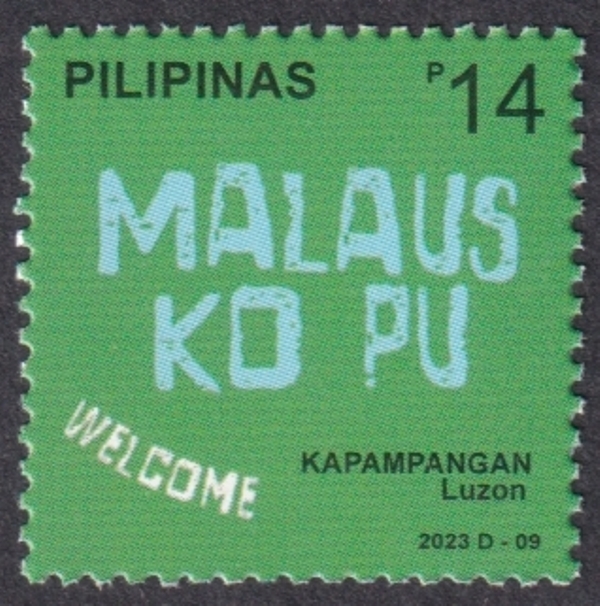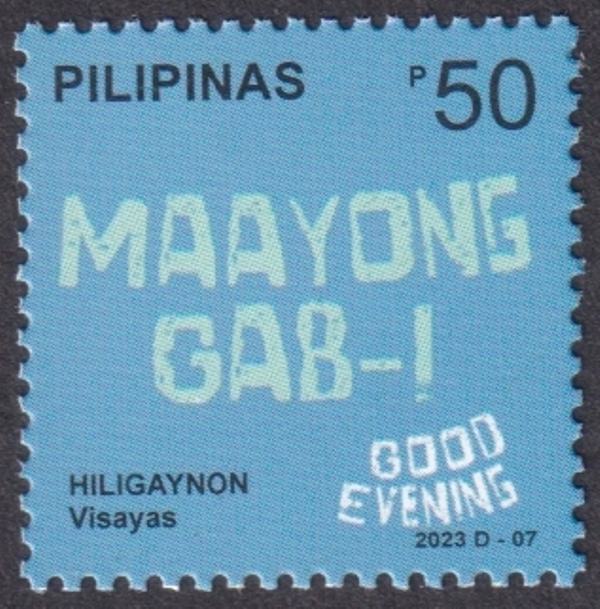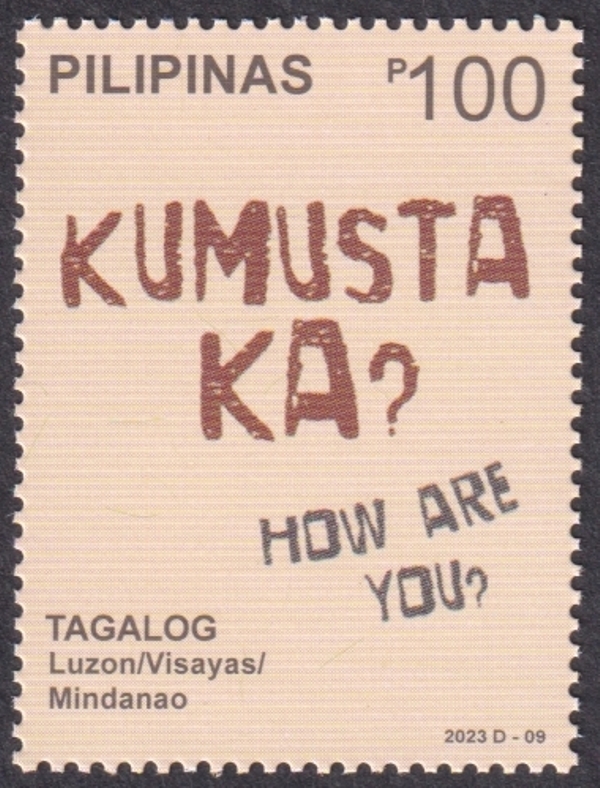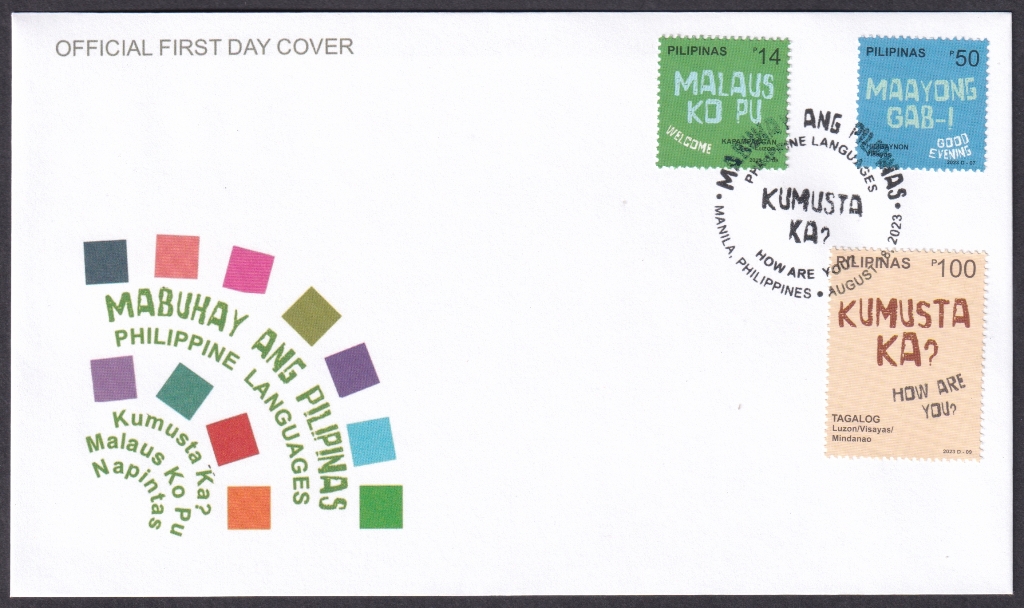2023, August 18. Philippine Languages - Series 2
Litho Offset, Amstar Printing Company, Inc., Perf 14
Singles, Sheets of 100; Sheets of 40


14p - Malaus Ko Pu (Welcome) – Kapampangan, Luzon (1,500,000)
50p - Maayong Gab-I (Good Evening) - Hiligaynon, Visayas (1,500,000)
100p - Kumusta Ka? (How Are You?) – Tagalog, Luzon/Visayas/Mindanao (825,000)
First Day Covers: Manila
Philippine Languages
The Commission on the Filipino Language (CFL), also referred to as the Komisyon sa Wikang Filipino (KWF), is the official regulating body of the Filipino language and the official government institution tasked with developing, preserving, and promoting the various local Philippine languages. The commission was established in accordance with the 1987 Constitution of the Philippines.
There are some 130 to 195 languages spoken in the Philippines, depending on the method of classification. Almost all are Malayo-Polynesian languages native to the archipelago. A number of Spanish-influenced creole varieties generally called Chavacano along with some local varieties of Chinese are also spoken in certain communities. The 1987 constitution designates Filipino, a standardized version of Tagalog, as the national language and an official language along with English. Filipino is regulated by Commission on the Filipino Language and serves as a lingua franca used by Filipinos of various ethnolinguistic backgrounds. (Wikipedia)
Kapampangan - is an Austronesian language, and one of the eight major languages of the Philippines. It is the primary and predominant language of the entire province of Pampanga and southern Tarlac, on the southern part of Luzon's central plains geographic region, where the Kapampangan ethnic group resides. Kapampangan is also spoken in northeastern Bataan, as well as in the provinces of Bulacan, Nueva Ecija, and Zambales that border Pampanga. It is further spoken as a second language by a few Aeta groups in the southern part of Central Luzon.
Hiligaynon – often referred to as Ilonggo is an Austronesian regional language spoken in the Philippines by about 9.1 million people, predominantly in Western Visayas and Soccsksargen (South Cotabato, Cotabato, Sultan Kudarat, Sarangani and General Santos). It is the second-most widely spoken language in the Visayas. It also has one of the largest native language-speaking populations of the Philippines, despite it not being taught and studied formally in schools and universities until 2012. It is also spoken in other neighboring provinces, such as Antique and Aklan (also in Western Visayas), Negros Oriental in Central Visayas, Masbate in Bicol Region, Romblon and Palawan in Mimaropa.
Tagalog – is an Austronesian language spoken as a first language by the ethnic Tagalog people, who make up a quarter of the population of the Philippines, and as a second language by the majority. Its standardized form, officially named Filipino, is the national language of the Philippines, and is one of two official languages, alongside English.

